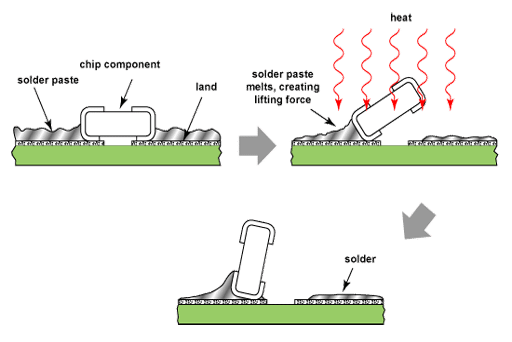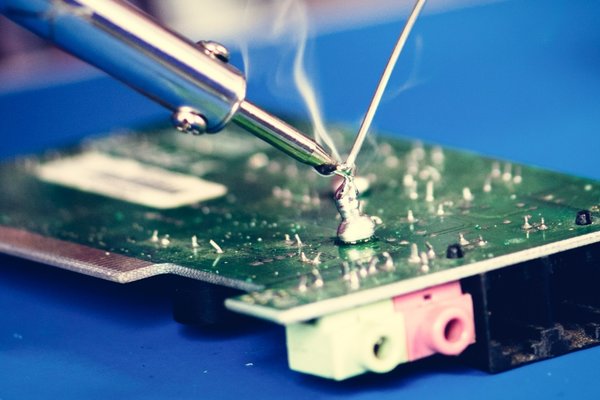About us
FASTPCBA Co.,Ltd
-
 Building 1, Senyang Electronic Technology Park, Guangming High-tech Park, Yutang Street, Guangming District, Shenzhen City.
Building 1, Senyang Electronic Technology Park, Guangming High-tech Park, Yutang Street, Guangming District, Shenzhen City.
-
 F:86-13418481618
F:86-13418481618
-
 pcba13@fastpcba.cn
pcba13@fastpcba.cn
 date:2019-10-24 16:28:44
date:2019-10-24 16:28:44
Quick turn pcb fabrication affecting solderability factors
There are many factors that affect the solderability of components or pcb fabrication pads, mainly including:

1.Oxidation
Most problems with poor solderability are caused by surface oxidation of the material being welded. Generally the used solder paste, when the thickness of the oxide layer exceeds 5μm, the wetting force does not change much. But when thickness is less than 5μm, the wetting force drops sharply to 0.2mNmm with the thickness increasing of the oxide layer at that time the oxide layer thickness have great impact on welding force

In the lead technology era, tin-lead coatings are mainly used for soldering end of surface-mounted components. Since they do not form a solid oxide layer, rosin flux can remove it. After storage for a period of time, the tin-lead coating remains solderable. When used for component solder joints, the tin-lead coating is overlaid on the base metal by electroplating (or hot-coating tin).
Simply using tin-lead plating does not ensure the solderability of the components. Especially for the plating layer, it is necessary to strictly control the starting process. If the base metal treatment of the component solder joints is not suitable before plating, the surface still has an oxide layer. Although this layer is not a solderable layer, it can still be plated with a solderable layer. In this case, after the component is visually inspected and accepted by the pcb fabrication manufacturer, the plating layer will fall off the substrate during the subsequent soldering. Form a non-wetting solder joint. This condition also occurs on the surface treated by ENIG. If the Ni layer under the Au layer is oxidized, a solder joint without continuous intermetallic compound is formed, which is weak in strength and can be broken when subjected to stress.
2. Pollution
In fact, the range of contamination of the solder joints of the components is very wide: during the electroplating process, unnecessary metal and organic residue deposits: tiny fibrous materials, silicones and plasticizers on the packaging structure; the process requires human intervention in the occasion, there is always fingerprint residue, and any amount of these pollutions will reduce the weldability.
3. The pinholes of the coating are sensitive.
The pinholes of the coating cause oxidation of the surface of the base bottom metal to form interfacial non-wetting conditions. The plating layer is more sensitive to this phenomenon
Tin-lead plating is not like tin-lead immersion coating. Electroplated tin-lead is not a true tin-lead alloy. Instead, it’s irregular tin and lead spherical particles grow on the substrate, and their proportion depends on the plating parameters. If the pcb fabrication process is not strictly controlled, pinholes will be formed at the boundaries of the pellets. Although the solderability was initially met, the solderability decreased rapidly with the appearance of oxidation.
4. Abnormal solder joint metallurgical properties
Gold and silver have a high solubility in tin alloys, causing the metal at the solder end to leaching quickly in the solder. If a sufficient amount is incorporated, the connection strength may not be suitable, and the underlayer may be exposed (such as a multilayer ceramic capacitor) to reduce electrical reliability.
5. Plating grain structure
It has been reported that the weldability of non-hot melt coatings is related to the grain structure. The weldability of dense coatings of small particles (about 0.5um average intercept) meets the requirements, while the coating of larger particles (3.0~4.5um average intercept) Will reduce solderability. However, the actual surface test of chemical nickel gold and electroplated nickel gold is actually tested. On the contrary, the electroless nickel plating of the coarse grain has better solderability than the dense nickel plating. There is still uncertainty about the effect of grain structure on solderability.
6.Thin coating
On the one hand, the thin coating has pinholes, which easily cause oxidation of the underlying metal; on the other hand, it will be quickly dismantled during soldering, and the solderability of pcb fabrication depends on the properties of the base metal or the underlying metal.
 Building 1, Senyang Electronic Technology Park, Guangming High-tech Park, Yutang Street, Guangming District, Shenzhen City.
Building 1, Senyang Electronic Technology Park, Guangming High-tech Park, Yutang Street, Guangming District, Shenzhen City.
 F:86-13418481618
F:86-13418481618
 pcba13@fastpcba.cn
pcba13@fastpcba.cn